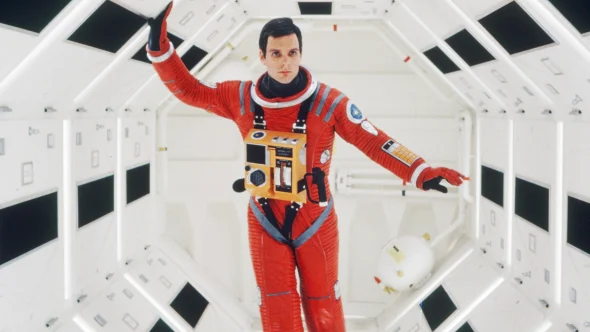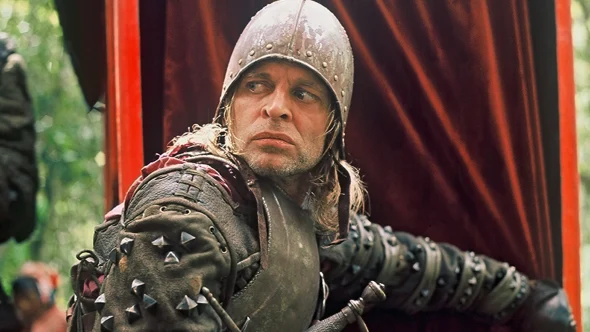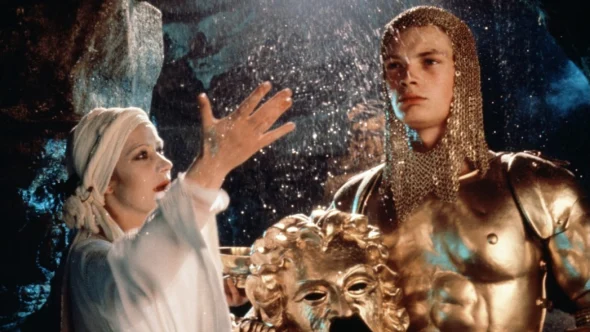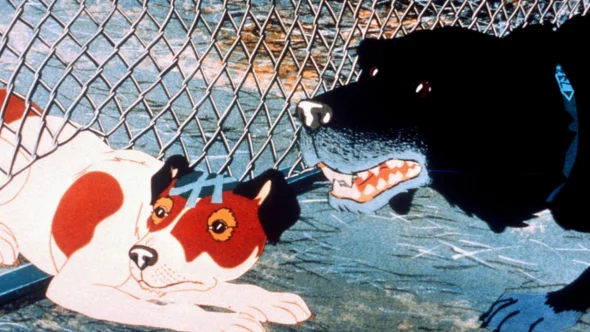
The Zellner brothers have been Sundance staples since their short film Sasquatch Birth Journal 2 premiered at the festival in 2011. The Austin-based writing-directing-producing-acting duo of David and Nathan Zellner returned to Park City to debut their features Kid-Thing (2012), Kumiko, the Treasure Hunter (2014), and Damsel (2018). In many ways, their newest movie is a return to their roots.
Sasquatch Sunset is an absurdist dramedy documenting a year in the life of a family of Sasquatch in the Pacific Northwest. "We've always loved Bigfoot, ever since we were kids," David says. "One day, I think we just started joking about how the only footage that's ever 'captured' of Bigfoot is just of it walking around. Whenever you see 'new' footage, it's of it walking or running away. We were like, 'Well, it's got to do more than that.'"
And so, the Bigfoot in Sasquatch Sunset, who are played by Oscar nominee Jesse Eisenberg, Riley Keough and Nathan himself, fight, mate, forage, and battle nature's most dangerous elements in ways that are both hilarious and harrowing. The movie is an unexpected yet fitting addition to the Zellners' singularly creative filmography.
"The films we make choose us. We only make the ideas that we're most obsessed with," David says. "These things are so hard to make. It's impossible to do something we're not passionate about. It wouldn't be worth anyone's time and it would require too much heartache."
"Some ideas percolate for a while, and then you lose interest in them and they run their course. Then there are ones that stick around and keep screaming at you until you make them," he adds. "This is one that we just couldn't shake. The more we dove in, the more obsessed we got, and then little by little, we got other people to join in and share in our obsession. Step by step, it came together, and that's usually how it goes."
Below, the Zellner brothers share with A.frame their five favorite films, with the caveat that "it changes day to day," as David explains.
"I feel like your Top 5 always moves with whatever era you are in," adds Nathan. "It's always easiest for me to go back to the very beginning, when we were kids, and what we were watching."

Directed by: Stanley Kubrick | Written by: Stanley Kubrick and Arthur C. Clarke
David Zellner: From when we first saw it as children to now, one film that consistently continues to inspire us and we never get tired of is 2001: A Space Odyssey. There's always something new in it. I find it to be the most incredible, profound film. Generally speaking, the art that we're both attracted to and respond to the most on an emotional level is the kind that is not didactic. It's not forcing something down your throat, which usually limits what it is and cripples it from being infinite. What I love about 2001 is it gives you just enough information to be fully invested, but it also leaves breathing room for you to come to it on your own terms. That's why I think it has aged so well and it's still so profound. It inspires us in everything we do, and I think about it a lot.
The "Dawn of Man" sequence was one of the biggest influences on Sasquatch Sunset. They created a whole world in that scene, and you buy into it immediately. That was a big inspiration in terms of the physicality and performances we wanted to capture in our film. We watched it repeatedly, showed it to our cast, and talked a lot about the nuances of that one sequence.

Written and Directed by: Werner Herzog
David Zellner: Werner Herzog is one of our all-time favorite directors. We saw Aguirre, The Wrath of God in college, and it was such a profound moment for me, because it felt like reading a Rosetta Stone or something. We were VHS kids. We grew up before the internet, so our IMDb was going to the video store and reading the boxes. We had to try to memorize a lot based on just a movie's billing, description, and whatever label it was distributed on, and we gathered as much information as we could from that. So, we knew very little about Aguirre before we watched it. It just seemed like this mysterious adventure film about conquistadors during the age of exploration.
I knew it was going to be a little surreal, but when I finally saw it, it felt like it was the culmination of everything I'd wanted to see and had been interested in. It was the kind of movie that I had been yearning for but hadn't gotten. It had both a sense of adventure and naturalism, but it also felt like a fever dream. It checked so many boxes for me. It was mind-blowing, and it opened both of us up to the rest of Herzog's work, which has had a profound, continuing impact on us.
Nathan Zellner: David and I went to different schools, and I remember when he called me and said, "You've got to see this movie." I had to go to the school library and request that they order it from another library. And then I watched it in this cubicle with a VHS-TV combo player, because you couldn't leave with the movies. We had to seek stuff out that way, but it was exciting. When you end up being able to remember experiences like that so well, it's fun too.

Directed by: John Boorman | Written by: Rospo Pallenberg and John Boorman
David Zellner: There are images in Excalibur that I think about all the time. Almost every time we make a movie, there's inevitably a moment where we're talking about a shot from a John Boorman film. It's usually just one shot or angle, and that's the shorthand we use to describe it. We were kids when we saw Excalibur, and it had such a profound impact on us. The hyper-stylization of it was so memorable. It was so glam, and so sexy, and so grimy. It was just so epic. What's interesting is that the thing I liked about it is something we try to do sometimes, which is that it's heavily stylized but it was also shot on location and that helps legitimize the stylization.
Nathan Zellner: There are a lot of great movie scores, especially from when we were growing up in the '70s and '80s, but the score for Excalibur really stood out to me when I first heard it. I ended up researching where all the music for it came from, and it turned out to be classical music that he had reused, repurposed and recomposed for it. That sparked a love affair I still have with really epic scores.

Written and Directed by: Martin Rosen
Nathan Zellner: Martin Rosen made both Watership Down and The Plague Dogs, and we sometimes debate which is our favorite. I like Watership Down a little more, but they're both equally good and really unique animated films. The Plague Dogs is so sad. It's one of the saddest movies I've ever seen, and I think we watched it together because we found it at a video store and we were both fans of Watership Down already. We were like, "I didn't even know he made another movie!" So, we watched it and, after it was over, we went to separate corners of our house to cry.
David Zellner: It's such a powerful film, and it's such a ballsy film. I think it indirectly, through allegory, says so much about the human condition that might feel on the nose if it was too literal. But it's not. It's a movie about two dogs who are just trying to find love and connection. That's all they want, and they're constantly struggling with that. It's so profound, and it's really interesting.
Watership Down, even though it's such a beloved classic that's readily available everywhere, was an independent production. For an animated film, that's so rare. It was incredibly successful, though, and based on that, Martin Rosen was able to do The Plague Dogs. It was an independent production as well, but it had all this momentum behind it because of the success of Watership Down. But that film came out in the late '70s and The Plague Dogs came out in 1982, and the world had changed. It was suddenly the era of E.T. and Footloose and movies like that, and then The Plague Dogs comes out and it's 10 times darker than Watership Down. The world did not want it at all, but it's such a bold, profound movie. I highly recommend it to anyone who might be interested in it, but it may also be the saddest movie I've ever seen.

Written and Directed by: Miklós Jancsó
David Zellner: It's incredible. What's so beautiful about it is that there's not a single main character in it. For the most part, you're just seeing these two opposing sides battle in the film, and the movie is constantly charting who is in a position of power. The way Jancsó shoots everything is incredible. He does these long tracking shots that would be hard to pull off with today's technology. The fact that they pulled them off in the '60s is just phenomenal. The film has some of the most stunning tracking shots I've ever seen.
There are scenes in it where people are having a very heated conversation in the foreground and, at the same time, there's something really small moving way off in the distance in the background. Then, over the course of this long shot, you realize the small thing in the background is a guy on horseback riding full speed at the camera. When he reaches the camera, the scene suddenly changes and it becomes about this other person! The way the scenes are structured is just mind-blowing and inspiring. I go back and look at that film a lot.







